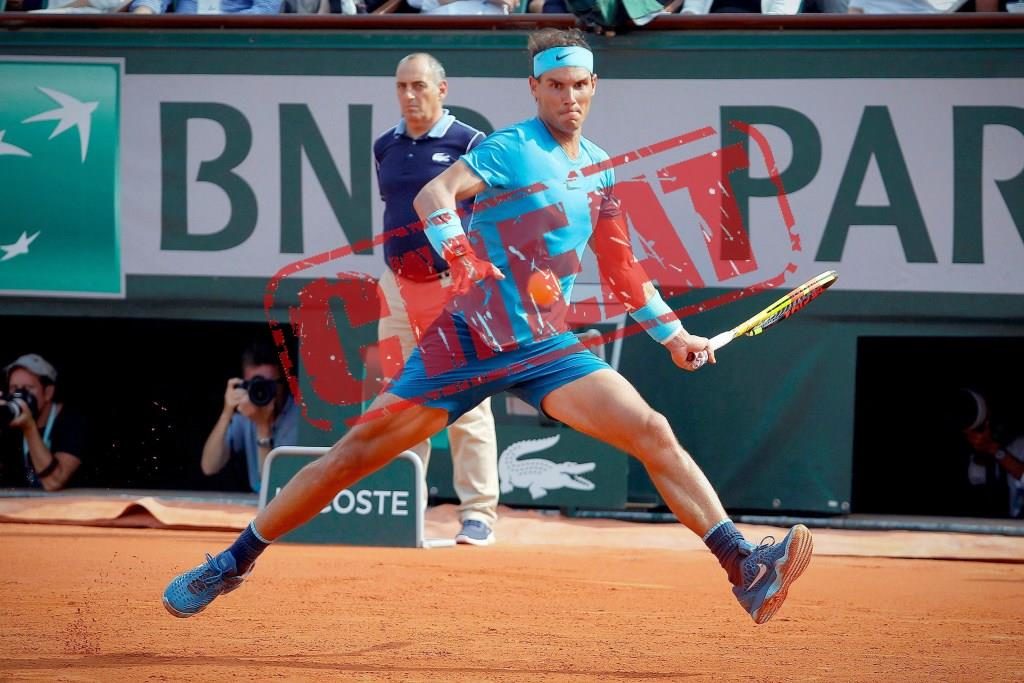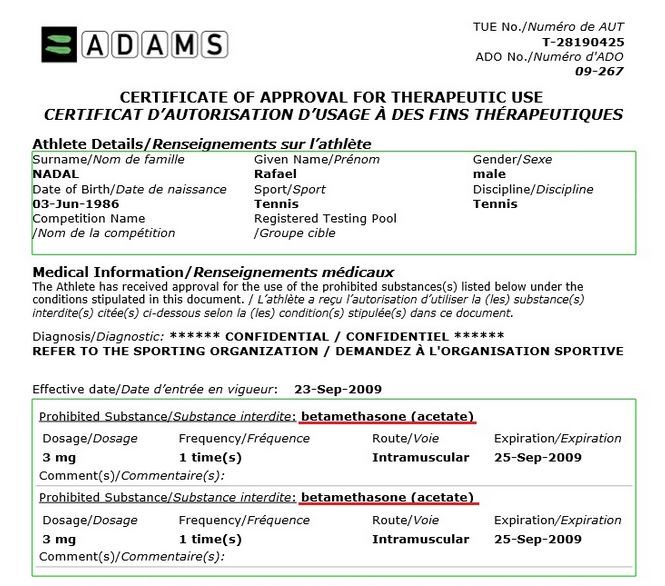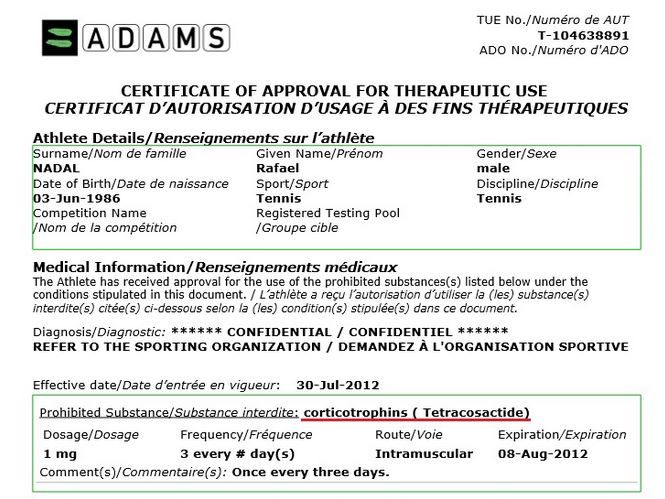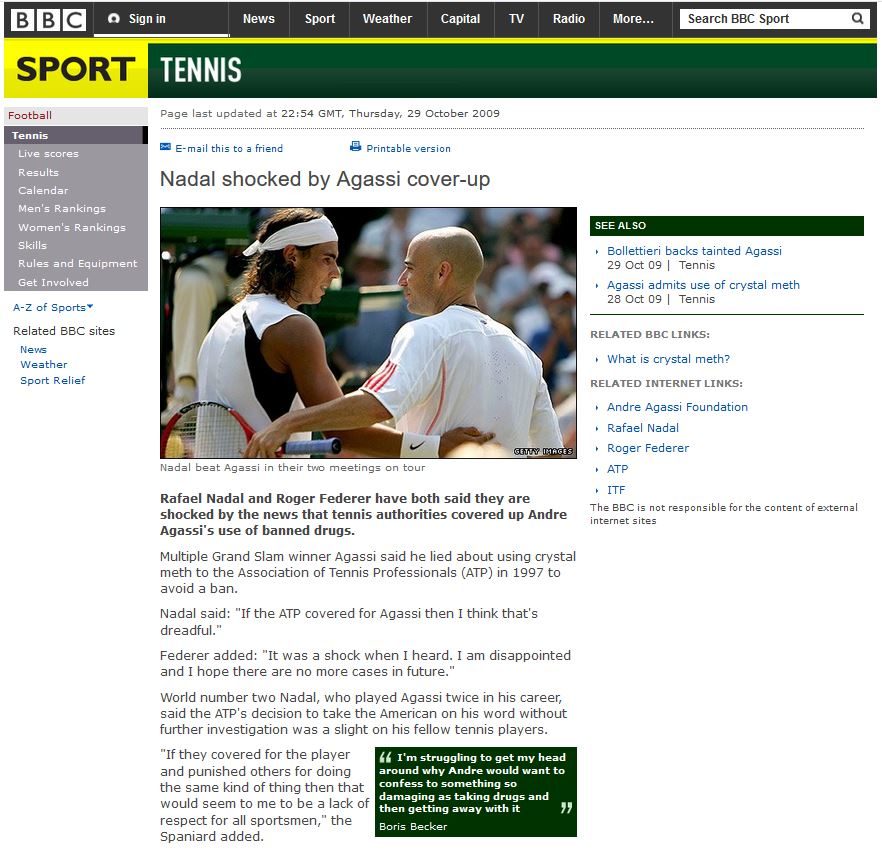The Guardian on yesterday's 'historic' French Open victory for Rafael Nadal:
Rafael Nadal pushed his 32-year-old body to the edge and the rules to breaking point, albeit unwittingly, to win his 11th French Open title on a warm, humid Sunday afternoon, an achievement that reduced him to tears of joy.
His lower left arm cramped on him about half an hour from the end at just the moment his opponent, Dominic Thiem, surrendered to the lassitude that paralysed his otherwise stout resistance and, in the still sunny autumn of his days, the Spaniard cruised further away from all his rivals on his favourite surface with a 6-4, 6-3, 6-2 win that took him two hours and 42 minutes on his beloved Court Philippe-Chatrier.
Whether he is now fit and willing to play Queen's Club before Wimbledon remains doubtful. He has cancelled the warm-up twice now, after the rigours of the clay season. He sounded non-commital.
It was questionable, meanwhile, that, according to a strict reading of the game's rules, he should have been allowed repeated treatment on his serving arm without penalty after it went numb as he paused during his serve at 2-1 in the third set. He had the trainer back on after Thiem held for 2-3, and again just before he served out the match.That's precisely the problem: everybody should be questioning Nadal's physical fitness. The man is known to have used banned substances - albeit ' legally', through secretive backroom channels established by 'anti-doping' bodies like WADA - in the past.
Nadal claimed later that wrapping on his arm, which he says he used to absorb sweat, constricted blood flow. "The finger was very tight, I couldn't move the finger," he said.
"It was not a normal cramping - probably because ... the bandage creates pressure ... probably don't allow to have the right circulation. For me [it] was scary. I was not able to move the hand, the finger. I went straight to my chair ... I didn't know even what I did. I was trying to cut my tape. After a couple of minutes, I still had the same feeling. After that, things went better and better. When I take the bandage [off], the things improved."
There is a case to be made that the rule on cramping - drafted in 2010 in response to claims that it is a result of poor conditioning - should be reviewed. Had the umpire chosen to, he could have docked Nadal a point. And, while it might have interrupted the flow of the game, it surely would not have materially affected the result, which elevates him alongside the Australian Margaret Court as the owner of 11 grand slam titles at the same tournament - hers being in the Australian Open. And nobody could question Nadal's physical fitness.
The first set was as curiously disjointed as was Nadal's against Diego Schwartzman in the semi-finals, and Thiem's second against the Italian Matto Berrettini earlier on, although there were passages of excellence to blot out a shopping list of errors, from framed forehands to wayward serves - including one double-fault by Nadal which bounced in front of the net, much to the amusement of the crowd.Here are the two 'TUEs' (Therapeutic Use Exemptions) listing Nadal as having formally requested - and been approved - the use of banned performance-enhancing steroids:
Nadal recovered from that embarrassment and the pressure mounted on Thiem's first serve. He dumped a forehand to hand Nadal three set points. Another wild forehand long sealed it.
Thiem's serve continued to be his blessing and a curse, letting him down when he needed it most, and Nadal was able to steadily impose himself on the match. When he held through deuce for 4-1, weathering a fierce Thiem fightback, he will have sensed the title was his to lose. He served out to lead by two sets after an hour and 52 minutes, and Thiem's mission impossible turned into a public ordeal, albeit one he was privileged to endure.
The close was an anti-climax, the drama settling on the frantic efforts by the trainer around Nadal to keep him fit to finish.
In addition, two years ago, the French Sports Minister Roselyne Bachelot claimed that Nadal missed most of the 2012 tennis season because he had tested positive for doping. This would mean, presumably, that his discovery and ban had been covered up by the relevant authorities.
Two years before that, Belgian tennis player Christopher Rochus noted Nadal's miraculous recovery from injury during a championship match with Stanislas Wawrinka at the 2014 Australian Open, saying:
"When he returned from the locker room, he was limping. Then, surprisingly, he could run in the third and fourth set. Clearly [Nadal] left the track to get a shot."Asked to clarify his 'outrageous claims', Rochus elaborated:
"Of course it [doping] is a reality. I said that more than ten years ago. It [tennis] is a sport that has become more and more physical, so there are inevitably more temptations to take performance-enhancing drugs. Now, with the Armstrong issue, we have to admit that just because someone has never tested positive, it doesn't mean that person has never doped.By all means, take drugs to enhance performance. Spectators benefit from seeing performers push their limits. Just stop lying to yourselves - and everyone else - about how you achieve those results. And that includes getting high and mighty about condemning others who are caught...
When one can afford good doctors to do personal research, it is possible to take undetectable drugs. So in my opinion, anti-doping controls are useless and they really don't prove anything. Regarding Nadal, [...] everyone [in the tennis world] has the same question: How can you be so strong in Roland Garros and, one month later, you are apparently unable to play? That's why it looks so suspicious..."







Reader Comments
to our Newsletter